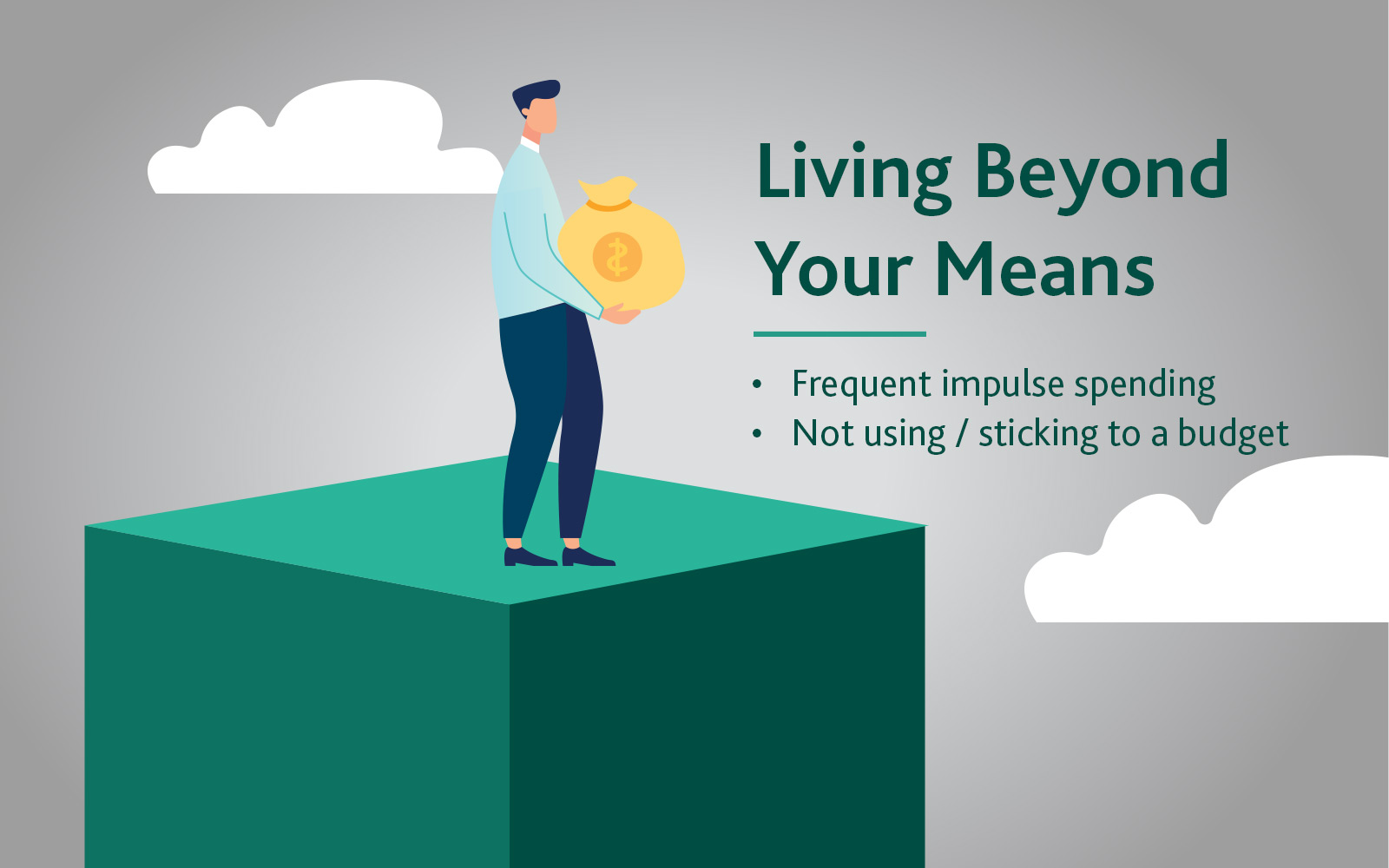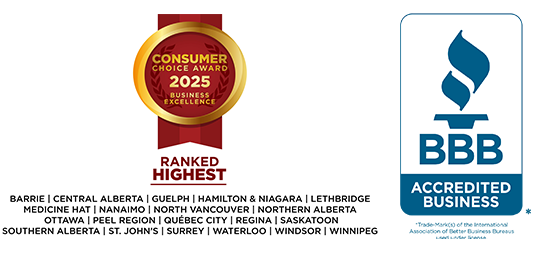It’s easier than ever to spend more than we can afford. We pay for most purchases with a debit or credit card — or, increasingly, with the wave of a smartphone or swipe of a finger.
At the same time, we’re also seeing a steep rise in the cost of goods, availability of things to buy, and pressure to keep up appearances in our social media dominant world.
It’s a tragic recipe for living beyond our means.
If we’re not regularly creating a monthly budget and tracking our spending, a handful of seemingly innocent purchases can quickly add up over the course of a month.
This is troublesome if our payment process of choice is cash or Interac — but at least there’s a limit to how much we can spend. The real danger is when we start using credit cards and lines of credit, where we may have access to twice or three times our monthly income.
The above may or may not be representative of your own experience. But it does highlight the risk of what can happen if you’re not clear on what it means to live within your means — and mindful of when you stretch beyond your financial limits.
What are your means?
Your means are essentially your or your household’s monthly earnings: Living within your means implies you spend less than you earn. Living beyond your means implies you spend more than you earn.
Here’s a helpful exercise to understand whether you’re consistently living within your means:
- Create a list or spreadsheet with six columns (one for each of the last six months) and three
rows (labelled income, expenses, and difference).
- Download all your online banking and credit card statements for the last six months.
- Add all your deposits (income) and all your withdrawals (expenses) for each of the last six months. Record these numbers in the corresponding cell in your spreadsheet.
- For each month, subtract the expense row from the income row above. Record this number in the corresponding difference.
If the resulting number is greater than zero, you were living within your means for that month. If it’s less than zero, you were living beyond your means.
- Add each of the six difference cells together. This reveals how much you have either lived within (positive) or beyond (negative) your means in the past six months.
Impacts to your ability to live within means
There’s a common misconception that only people who are careless or can’t control their spending are living beyond their means. However, these are far from the only — or even the most common — reasons people overspend.
Let’s take a closer look at three factors that may impact your ability to live within your means:
Housing
Rent or mortgage payments are by far your largest monthly expense. Experts recommend keeping housing costs below 30 percent of gross (before tax) income to remain affordable. But that’s increasingly challenging with skyrocketing real estate costs in many Canadian cities.
As the rise in real estate prices vastly outpace corresponding rises in income, you may find you have far less left over for other bills and monthly expenses.
Meals
Food is another unavoidable cost that can sidetrack your monthly spending. Even a basketful of pantry staples at the local grocer can add up to over $100. A full cart can easily exceed $300 — and those ingredients never seem to stretch as far as you expect.
Add in a few meal deliveries, pit stops at the drive-thru, or one or two evenings at a sit-down restaurant, and your monthly tab for meals can easily rise to the fatter end of $1,000.
Unplanned costs
Something always seems to come up over the course of a month that you either didn’t anticipate or completely forgot about — and can’t avoid paying for. This could be something as costly as a major home or auto repair, or comparatively minor like a child’s sports fees or renewing your vehicle registration.
Over a year, those $50, $75, $150 costs can easily stretch you more than $1,000 beyond your means.
Tips to live within your means
Nobody sets out to live beyond their means. But life happens, and it can get extremely expensive if you’re not prepared. Proper planning is your biggest asset to help you manage the big, small, intentional and unavoidable costs in your life.
Create a budget and stick to it
A consistent budgeting habit is essential to ensure you’re consistently living within your means. The process doesn’t have to be overly complicated or time consuming, either. Take the 50/20/30 method as one example to help you get started.
Look through your last six months of bank and credit card statements. Note how much you earned over that time, and begin sorting your spending as follows:
- Living expenses (50% of monthly income): Note any costs that fall under the general umbrella of living expenses (e.g., rent/mortgage, utilities, groceries, personal hygiene, maintenance, insurance, transportation, medical, etc.) and their amounts.
- Discretionary spending (30% of monthly income): Next, note any non-essential purchases (e.g., restaurants, movies, shopping, travel / vacations, etc.) and their amounts.
- Savings (20% of monthly income): Finally, note any money you’ve set aside for various reasons (e.g., retirement, emergency fund, mortgage down payment, etc.) and the amounts.
If you’re consistently spending more than the recommended amount in any category — and/or more than 100 percent of your income — use this opportunity to find out why.
Make it easy
Whenever you receive a paycheque, simply multiply the amount deposited into your account by 0.5, 0.3, and 0.2. Write these numbers down on a sheet of paper or in a note on your smartphone.
Every time you spend on an essential expense, note what the purchase was for and subtract the transaction amount from the 0.5 amount. Do the same for your discretionary purchases and savings. Once any category hits zero, you may either ‘borrow’ from another category or stop spending.
At the end of each month, review your transactions and how your spending lines up with your 50/30/20 plan. Adjust your costs as necessary from month to month to keep all your categories in balance.
Build an emergency fund
Life is unpredictable. It’s impossible to anticipate every cost or financial challenge you’re likely to face. Setting aside between (ideally) three- and nine-months’ worth of living expenses can help cushion the blow of these unexpected costs and prevent you from habitually living beyond your means.
Even a small $200 to $500 cushion within your monthly budget can help a great deal as you begin building your emergency fund. You can work to a larger goal over time as you continue tracking and adapting your spending to fit your means.
Be mindful about credit use
Borrowing more money than you can repay in a month is, by definition, living beyond your means. While this may be obvious, less obvious is the sneaky way this is exponentially hurting your future ability to live within your means.
A dollar borrowed isn’t just a dollar. It’s a dollar plus whatever interest your lender charges for carrying that balance. Next month it’s the original dollar, plus last month’s interest, plus this month’s dollar, plus interest on the entire balance.
Each month you borrow beyond your means compounds on the previous months. Your payments get higher and higher, meaning you have less and less income available for your regular expenses. The more you use credit, the more you need credit just to make ends meet — and the worse the cycle becomes.
Get a fresh start
If debt has made it all but impossible to live within your means, there is help available. MNP Licensed Insolvency Trustees offer Free Confidential Consultations to review your entire financial situation and discuss options to get the financial fresh start you deserve.
If you qualify for a Bankruptcy or Consumer Proposal, both options can significantly reduce your monthly costs and provide a clear path to permanent debt relief. Throughout either process, you will also gain helpful guidance on creating a budget, prioritizing your spending, and building responsible credit habits.
Most importantly you’ll benefit from the support and guidance of a qualified and compassionate professional who understands your situation and wants to see you succeed.



